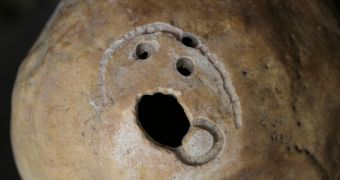University of California in Santa Barbara (UCSB) investigators recently conducted a series of archaeological excavations that ended up revealing a peculiar practice among Ancient Peruvian healers. These early doctors were apparently able to successful conduct skull surgeries a millennium ago.
This is surprising because surgeries involving the removal of parts of the human skull are conducted today in aseptic, carefully-controlled environments, where dedicated surgical equipment is used to operate on patients who receive anesthesia and pain medication both before and after.
The evidences uncovered by UCSB bioarchaeologist Danielle Kurin and her study group suggest that ancient Peruvian healers used hand drills and scraping tools to conduct trepanations more than 1,000 years ago. Somehow, their patients survived the procedure, the team reports.
Trepanation was a relatively widespread procedure in the past, used by doctors both in South America and Europe to treat a variety of medical conditions, ranging from headaches and traumatic head injuries to broken hearts. In some cases, these procedures succeeded in reducing trauma-induced brain inflammation enough for the patients to survive.
The discovery was made in the south-central Andean province of Andahuaylas, in Peru, where the earthly remains of 32 individuals were discovered. All lived in the Late Intermediate Period, from AD 1000 to 1250. Among them, these people underwent a total of 45 trepanation procedures. s
“When you get a knock on the head that causes your brain to swell dangerously, or you have some kind of neurological, spiritual or psychosomatic illness, drilling a hole in the head becomes a reasonable thing to do,” Kurin explains.
She holds an appointment as a visiting assistant professor with the UCSB Department of Anthropology, and is a forensic anthropology specialist. Kurin was also the author of a new paper detailing the findings, which was published in the latest issue of the American journal of Physical Anthropology.
“In the same way that new types of bullet wounds from the Civil War resulted in the development of better glass eyes, the same way IED’s are propelling research in prosthetics in the military today, so, too, did these people in Peru employ trepanation to cope with new challenges like violence, disease and depravation 1,000 years ago,” the team leader adds.
The reason why the holes the team found were not considered to have been caused by torture is that the hair of the individuals who got them was shaved around the target area. Traces of a herbal remedy were also discovered around the injury site, which may indicate a primitive type of anesthesia or antibiotic.

 14 DAY TRIAL //
14 DAY TRIAL //